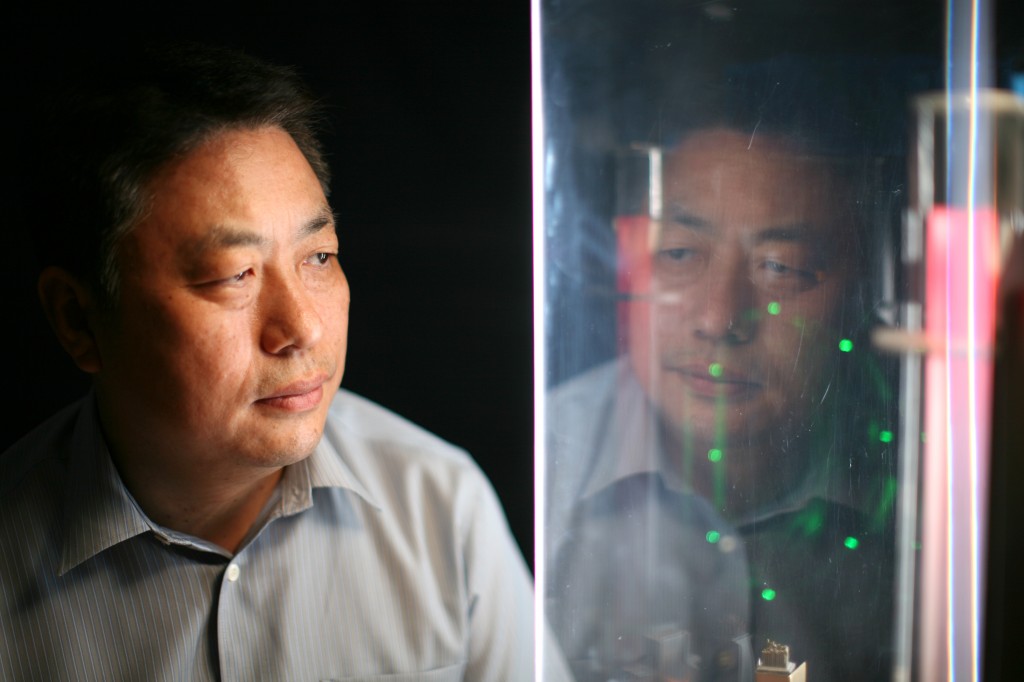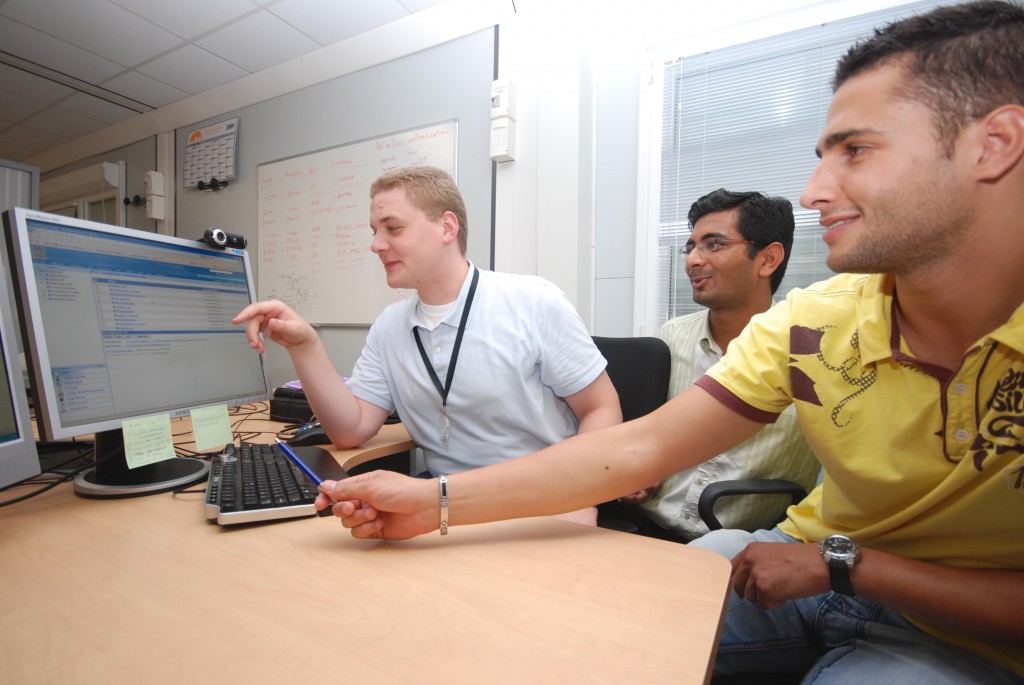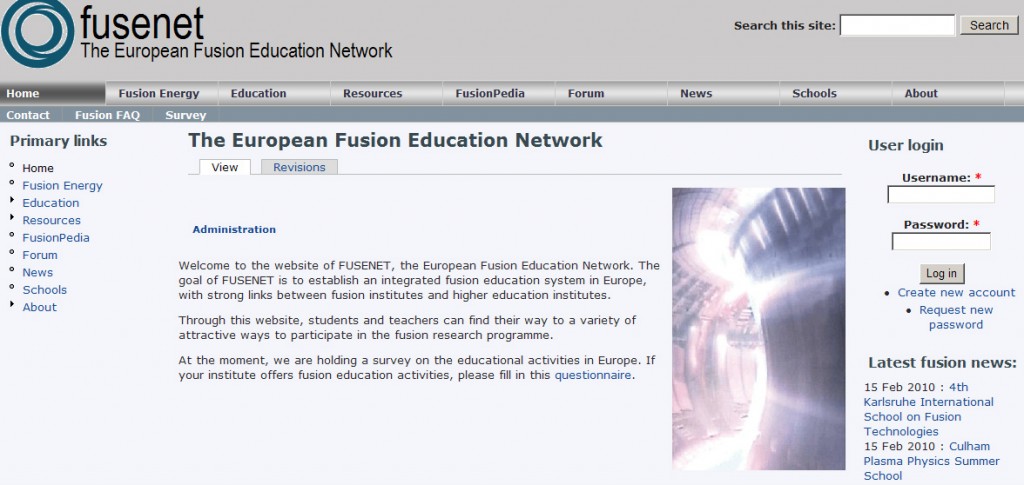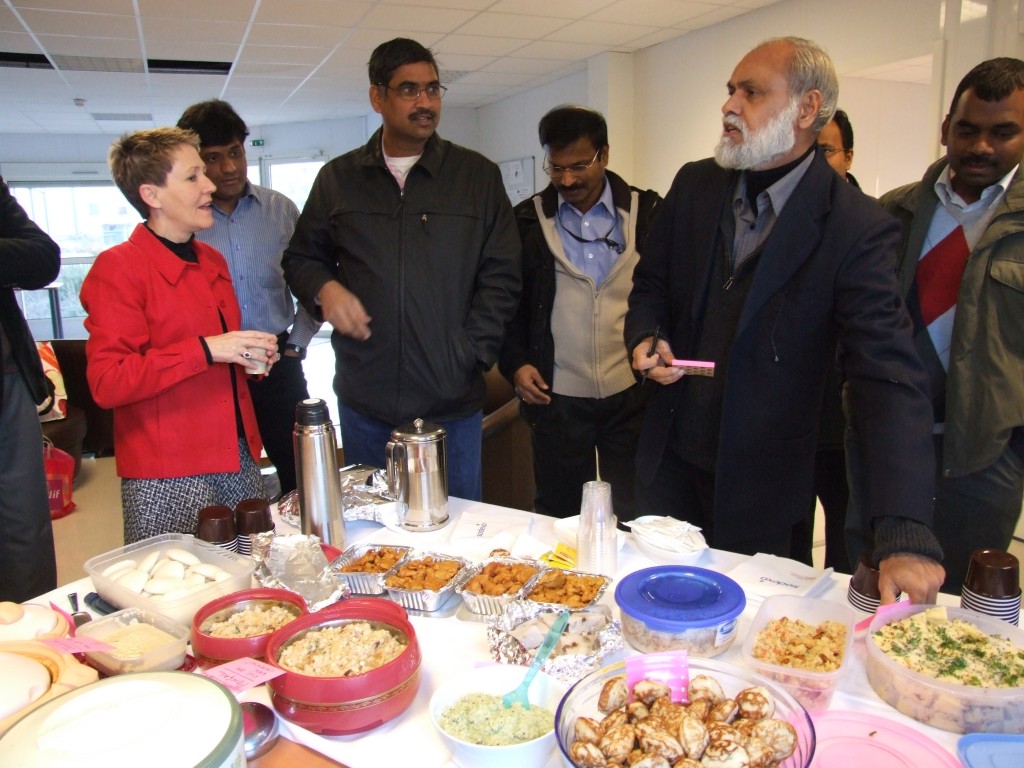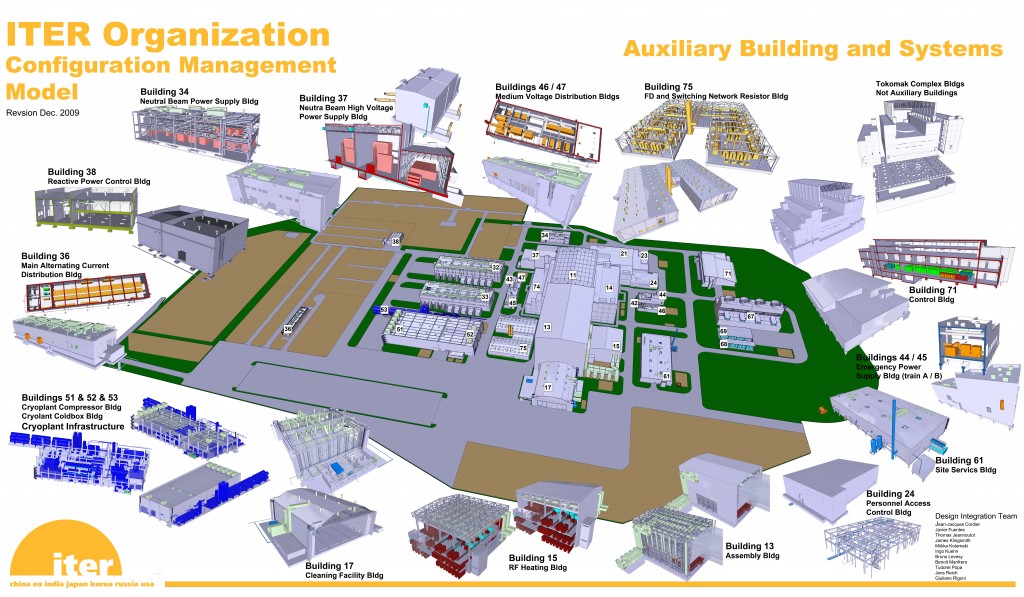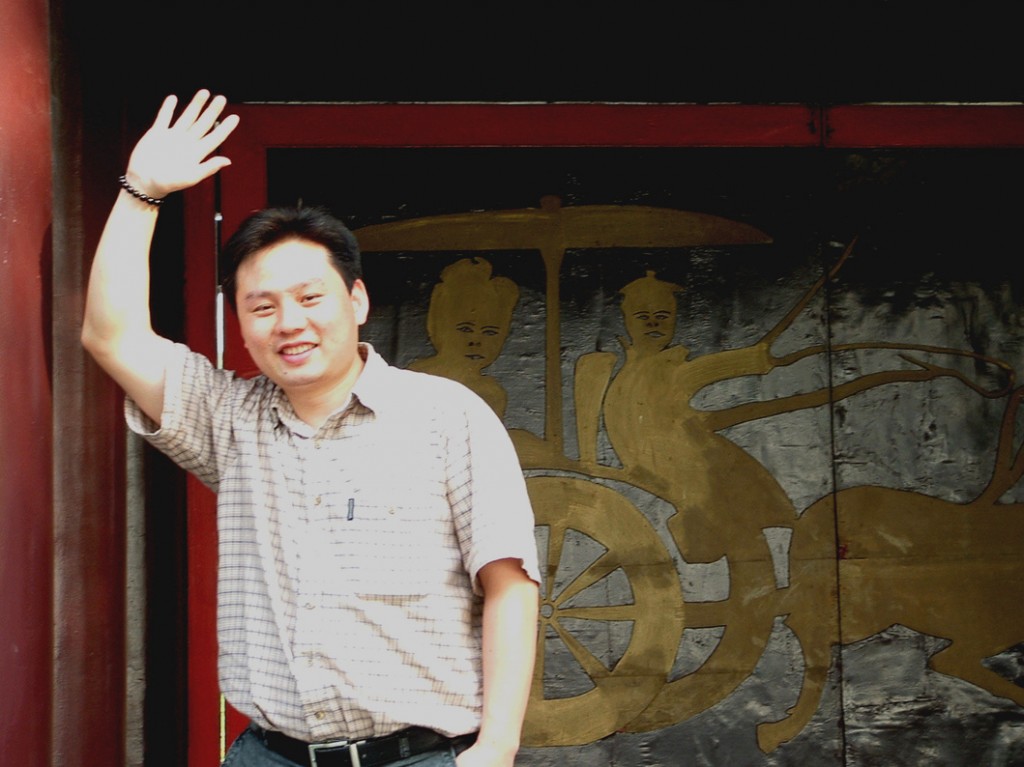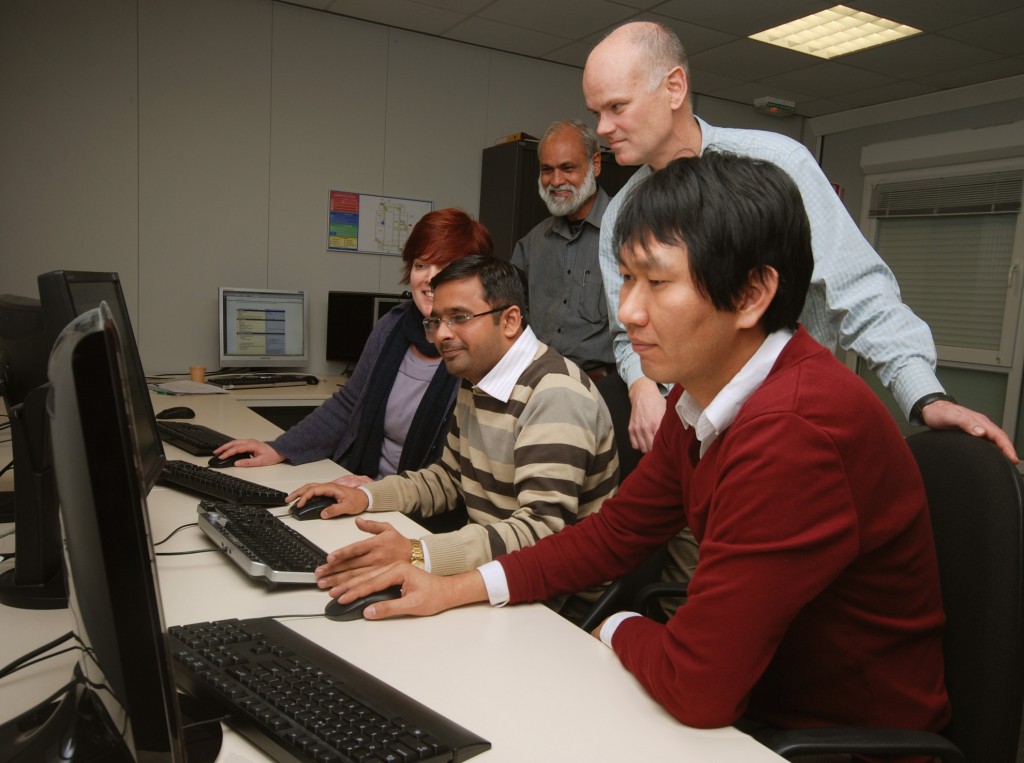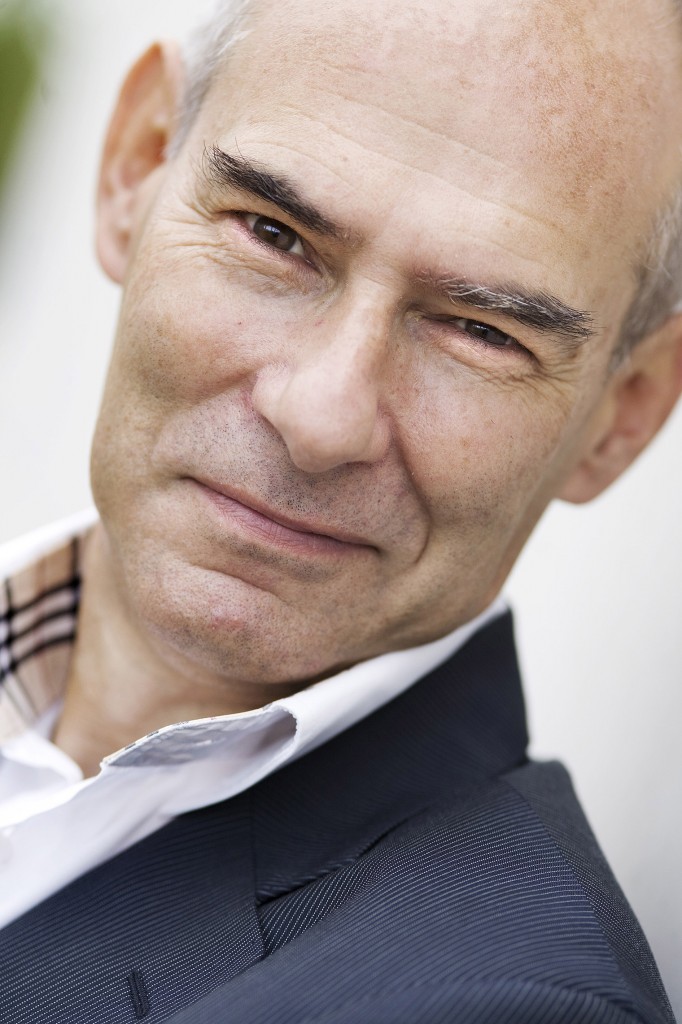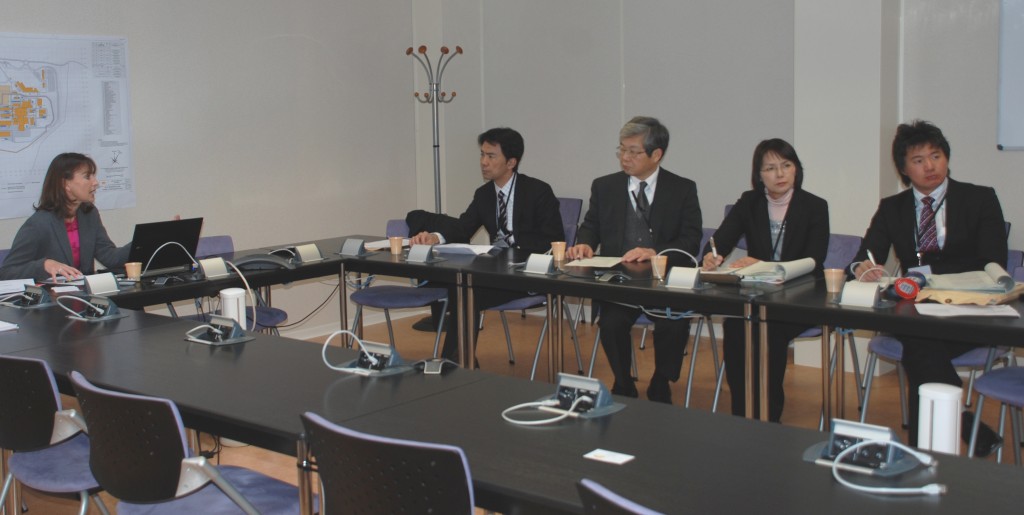Worlds away from the quiet ITER platform in Cadarache, manufacturing for the ITER Project has begun. Production of superconducting strand for ITER's toroidal field coils is underway, led by Japan, Korea and the Russian Federation.
Strand production is the first step in a complex fabrication process for ITER's "cable-in-conduit" conductors: strand is twisted into cables; cables are inserted into steel jackets; final conductors undergo testing and coiling. Last week, strand manufacturing for ITER reached an important milestone: billet #1,000 was entered into the ITER Conductor Database, which has been used since February 2009 to track and monitor production.
Made up of a very precise combination of elements (niobium, tin, copper, bronze ...), billets contain all the raw materials for the superconducting strand in precursor form. These precursors are then "drawn down" into lengths of one kilometre or greater to be used inside ITER's superconducting cables.
"This 1,000th billet represents approximately 60 tonnes of material," says Arnaud Devred, Section Leader for ITER's superconducting magnets. "That's enough superconducting strand for three of the eighteen toroidal field coils. In the end, we expect to have 8,000 to 10,000 superconducting billets registered in our Conductor Database."
Six Domestic Agencies will be involved in the procurement of ITER's conductors, contracting with two to four suppliers each. The ITER Conductor Database will centralize data from all suppliers related to strand/cable/jacket/conductor production—from raw materials and process information, to the many test results required for quality control. Only strands that are approved in the database by the relevant Domestic Agency can be sent on for cabling; similarly only approved cable lengths can be used for jacketing.
"The database will allow us to track the properties of every conductor length used in our magnets, right down to the level of the individual strands," says Matt Jewell, ITER-Monaco Fellow in the Magnets Division, and closely involved with the Conductor Database. "Given the complexity of the ITER conductor fabrication process, a tool like this was absolutely essential."
All ITER conductors—no matter the supplier—must strictly match the performance characteristics set out in the Procurement Arrangements. The Conductor Database will allow the management of thousands of control points built into the procurement process to check quality along the way. "The Domestic Agencies will split conductor procurement between suppliers, but will retain sole responsibility for organization and process," explains Arnaud. "We've provided the Domestic Agencies with a tool for tracking production data and quality control—it's a good example of how the ITER Organization can play a coordination role."
Day-to-day development of the Conductor Database falls to Gregory Bevillard, who came to ITER after six years spent at CERN where, in particular, he developed the first database of this kind for the LHC project. Through close collaboration with the Magnets Division, ITER IT, CERN and the Domestic Agencies, the last module of the Database went online last week. "The challenge at ITER has been to develop a tool flexible enough to be used by a large number of suppliers," says Gregory. "After one-and-a-half years of development, the tool is now complete. We're continuing to train users at the Domestic Agencies and the suppliers, and working on the development of statistical tools for analysis of the conductor data."
The Conductor Database will track production data through the final acceptance tests for the conductors. A similar database for the next phase in the process—coil fabrication—is currently under discussion.
"Nuclear fusion may have a wonderful image as a sustainable energy source," says Niek Lopes Cardozo, "but it has one big drawback: building a fusion reactor is of surpassing scientific and technological difficulty." "And," he adds, "a whole generation of fusion experts is going to retire soon. So if we want to establish fusion as an energy source for the future, we have to train the new generation of engineers and researchers. The good thing about ITER is that it provides a long-term program and clear career perspectives. So students can choose to specialize in fusion and see where this will bring them."
Niek Lopes Cardozo is one of the most prominent ambassadors for fusion research in the Netherlands (see portrait in this issue). Until recently, he was Head of the Department of Fusion Physics at the FOM Institute for Plasma Physics Rijnhuizen, where he was in charge of Dutch research in the field of nuclear fusion (part of the Euratom-coordinated European fusion research program).
In May 2009 Lopes Cardozo made a career switch, when he was appointed as the first full Chair in Science and Technology of Nuclear Fusion at Eindhoven University of Technology. Here he is currently setting up a dedicated Fusion Master curriculum. "The goal of the Fusion Master is to feed the fusion community with the brightest and best-prepared minds," explains Niek. The Fusion Master program presently comprises five courses in fusion physics and two in fusion technology, plus a full year internship in one of the fusion research centres.
The Fusion Master will be launched in September 2011, but students can already follow a fusion "track" within the Applied Physics Master. Already, the program is attracting many students, who are motivated in their choice both because of the challenging science and the desire to use their talents to contribute to society.
"In fact, we see similar initiatives in several European countries, which is a very hopeful sign. It clearly shows the viability of fusion research," sais Niek. Spurred by these developments, 36 partners—universities as well as research labs across Europe—started the FuseNet European Fusion Education Network, which Niek chairs. This coordination program aims at enhancing the fusion training and education activities in Europe, and getting the word out to interested students.
The project received a grant of EUR 2 million from the European Commission, and covers all education levels—from secondary school through Bachelor and Master's level, to PhD, with an emphasis on the Master. The main actions of the projects are: the establishment and running of the FuseNet network; the development of individual learning opportunities and establishment of common educational goals; the joint development of educational materials and hands-on experiments; and the funding of joint educational activities.
The air in the premises of the Welcome Office of Agence Iter France was filled with the scents of oriental spices and herbs this Monday morning. The members of the Indian community at ITER had invited colleagues to an Indian breakfast featuring many different dishes that were not only an invitation to discover new tastes, but also to learn about the culinary traditions of the many different regions of India. Photo: AIF.
|
Ce Ye arrived from China just one month ago to participate in the ITER adventure. "I'm excited about making my own small contribution to this project," says Ce (pronounced "Tse"). "If, together, we can make it work, we will be contributing a lot to society."
Ce's specialty is quality assurance. At ITER, he'll be part of the team responsible for verifying that the quality assurance tasks assigned by ITER management have been followed to the letter. "In our field, we are used to saying that quality assurance is a little bit like the police—we do the enforcing, but we don't make the rules."
Before moving to France, Ce's professional life led him from the northern Chinese city of Dalian, where he earned a degree in Chemical Engineering from the Dalian University of Science and Technology, to the city of Zhuzhou, in south-central Hunan Province. He worked at the Zhuzhou Smelter (lead and zinc) as an interface for Danish, German and American suppliers, before becoming project manager at the Zhuzhou Times New Material (TMT) Technology Company. At TMT he was introduced to quality control for the first time, where he remembers learning "... that you can't have a good project without good quality documents."
In his last position as supplier quality engineer for the Canadian company Bombardier, Ce visited France twice on business. "In France, I've noticed a tolerance for individuality," Ce says. "People seem to appreciate each other, despite having differences of opinion ... that they express quite openly! I'm looking forward to trying new cultural experiences, and getting to know France and the French while I'm here."
That's a mission that will be made easier in a few months . Once Ce receives his "carte de séjour," he'll be able to get an international driver's license, and with that ... a car. For now, he relies on Chinese colleagues for rides back and forth from work.
During his first weeks in France, Ce has appreciated working in the "green" environment at Building 155 and the "quiet and safe" feeling of Manosque. What does he miss the most? "Family, friends, and food!" says Ce. He'll be joined in June by his wife, who currently works as a subcontractor for the Chinese Domestic Agency, and 2 ½ year old daughter.
The ITER machine is not just millions of nuts and millions of bolts. It's an integrated system that will use thousands of industrial computers to process and distribute hundreds of thousands of signals. Sensors will send messages to computers; computers will calculate, combine data and issue demand to switches, valves and other actuators in different systems; other sensors will check whether the operation has been properly performed ... and this will be repeated several thousand times per second.
"This can only work if all parts of the machine—what we call 'plant systems'—speak the same language," says CODAC Section Leader Anders Wallander. CODAC, which stands for Control, Data Access and Communication, is the "system of systems" that will make sure the ITER machine doesn't turn into a Tower of Babel.
For the various plant systems to be fluent in the common language of the ITER machine, teaching has to start early. "It is very important," says Anders, "to establish the language standard before plant systems are developed in all seven ITER members. Standardizing will make everything easier for everyone."
In order to avoid the use of "local languages" and the confusion that would result, every Procurement Arrangement going from the ITER Organization to a Domestic Agency is accompanied by a "dictionary"—a documentation package called the Plant Control Design Handbook (PCDH) whose 2010 edition was released last week. "PCDH," says Anders, "is based on the most widely used industry standards, norms and products, and on the 'best practices' implemented in large facilities worldwide."
For instance, the industrialist who will produce a component for ITER will find in PCDH the brand and type of the calculator (e.g., a programmable logic controller) he's supposed to include in the product he delivers. He will also find guidelines that, once applied, will let the ITER Organization know what steps have been taken in the manufacturing process of the component.
"It is essential for us that the industry follows these documents," says Anders. "Knowing precisely what's inside the box will make integration and maintenance much easier and more efficient. In the end standards and common languages all come down to reducing the cost."
In addition to publishing the 2010 edition of the PCDH, the CODAC team released the first version of a software package called CODAC Core System. "If you consider PCDH as the dictionary of the ITER language, then you could say the CODAC Core System is like the teacher that takes you through the learning process. Industrialists will use it to build particular applications and the software will guarantee the common language."
ITER being an experimental facility, it is likely that at an early stage operators will want to explore the machine's potential and increase its performance. A common language, shared by all plant systems, will make the requested changes easier—and cheaper—to implement.
On 1 February this year, Niek Lopes Cardozo was appointed Chair of the Foundation FOM, the Dutch national organization for fundamental physics research, chairing both the Board of Governors and the Executive Board. The Governing Board of the Netherlands Organisation for Scientific Research (NWO) also appointed him Chair of the Subfield of Physics.
As Professor at Eindhoven, Lopes Cardozo has supervised the PhD dissertations of some 20 young researchers. In addition to teaching and research, Lopes Cardozo has engaged in outreach, particularly to secondary school students. Together with Mark Westra (who later became Head of Commuinications of EFDA and ITER) he developed the Fusion Road Show(the link will direct you to a presentation Niek gave in Veldhoven 2008 together with the US Secretary of State, Stephen Chu.
Lopes Cardozo has also been active in the Dutch Physics Association, serving as Editor-in-Chief of the Dutch Journal of Physics. He represents Dutch fusion research on the top-level management committees of the European Fusion Programme and—up to his recent appointment as Chair of the Dutch physics program—he was Vice Chair of the Governing Board of the European Domestic Agency for ITER Fusion for Energy, of which he is still a member.
He is also co-initiator of ITER-NL, a consortium of Dutch knowledge institutions (TNO, FOM and NRG) which work together to achieve strong Dutch participation in the ITER Project through bridges built between researchers and the Dutch high-tech industrial companies that will be contributing to the construction of ITER. ITER-NL emphasized the role of ITER as a driver of innovation, and in recognition of this, the Dutch government granted ITER-NL earmarked support.
Implementing an international organization requires the management of many parameters including administration and human resources. These matters were of great interest to the delegation of the Japanese Atomic Energy Agency (JAEA) that came to visit ITER to begin a benchmarking study on how to proceed with setting up such a project.
The Director of JAEA's Paris office was accompanied by the Director of International Affairs and members of Fellowship Department. They met with Sophie Gourod for an overview of human resource activities. She gave them a general explanation of ITER policies on recruitment, training, fellowships, and administration and compliance with international regulations.
The visitors from Japan also met Emmanuelle Bellange, head of the Welcome Office at Agence ITER France, who presented the welcome activities offered to international staff and their families, before leading the delegation on a site tour.
Australia has a long tradition in fusion research. If you are interested to find out more about Australia's view of the future energy source for mankind, watch this video featuring some of Australia's most prominent fusion researchers.
|


